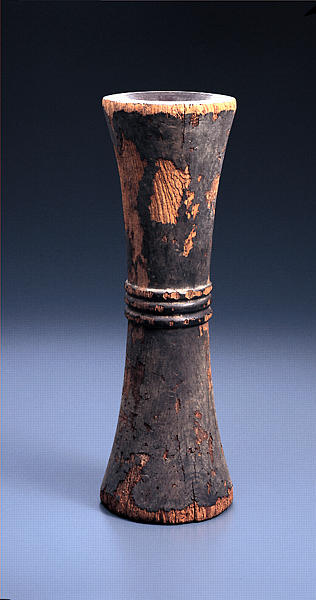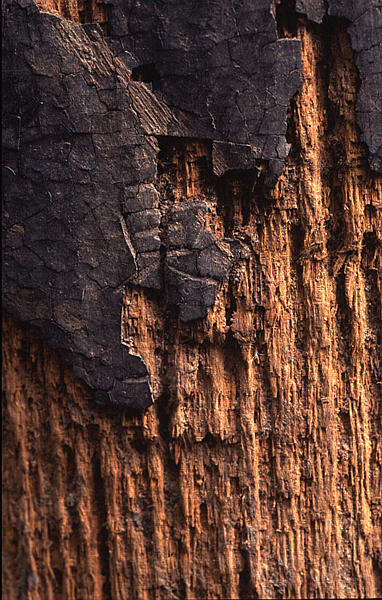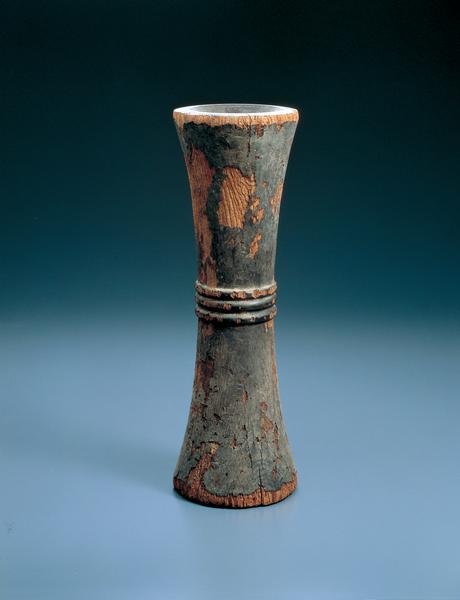Drum Cylinder
- Nara period
- 8c
- Black lacquered wood
- H-41.7 D-14
- Transmitted by Todaiji temple
Catalogue Entry
Nara period, 8th century
Black lacquered wood
Height, 41.7cm; mouth diameter, 14.0cm
A single piece of keyaki (zelkova) wood was deeply gorged out and lathe-turned to form the drum shape. Drum skins would have been fitted to both ends of the cylinder to create a double drum, and unlike the bowl-shaped forms of the cylinders of the large and small drums used in No today, this drum has three protruding bands carved around the central section, and the torso of the drum cylinder curves outward in a mild curve to both ends of the cylinder. The entire form has been coated in black lacquer, without the use of cloth layers.
This form of drum cylinder was a cylinder of the yoko (or kuretsuzumi) drum type used in Gigaku. Drum skins would have been fitted with shirabeo cords at each end, the drum would have been suspended on a kakeo cord from the neck of the player, and both ends would have been struck.
The southern storehouse of the Shosoin houses a set of 22 yoko drums transferred from the Todaiji collections which are thought to have been used at the dedication of the Great Buddha Hall at Todaiji on the 9th day of the 4th month of 752 (Tempyo Shoho 4). Of these 22, there are 19 drum cylinders which have almost the same measurements as the present drum cylinder. In any event, these drums are inscribed with the three characters "To-dai-ji" on one side of the three protruding bands in the center of the cylinder, and this clearly indicates that they were the property of Todaiji. The present drum cylinder has traces of the character "To" of the "Todaiji" inscription in the same position, and thus can be suggested to have originally been a part of this group, an example that, at some point in the past, left the temple precincts and passed into the private sector.
The flaking of the lacquer and the surface abrasion is quite severe, and yet the wood surface itself maintains its original form. This drum cylinder is noteworthy as an important example of Nara period musical instruments. SK


